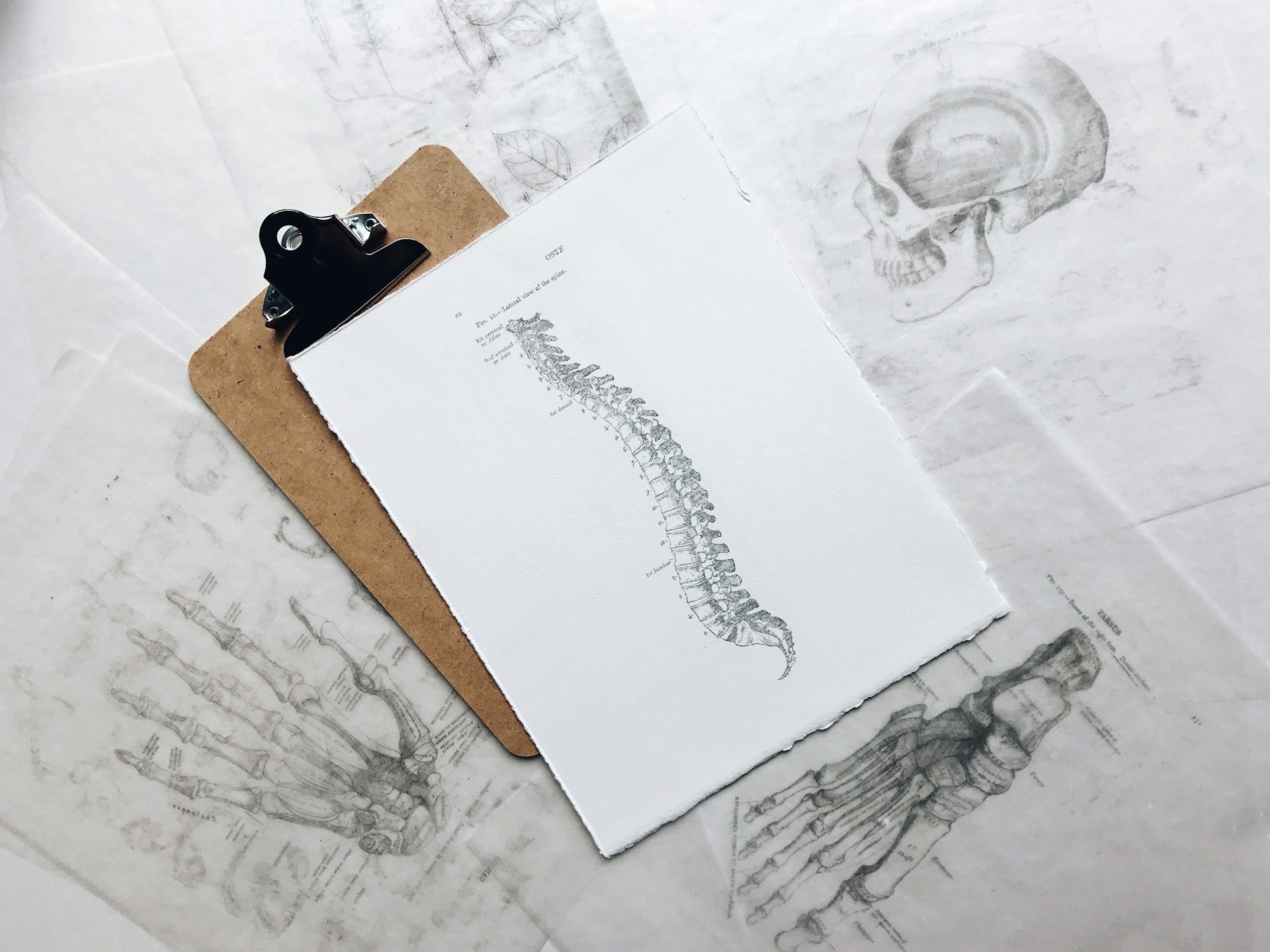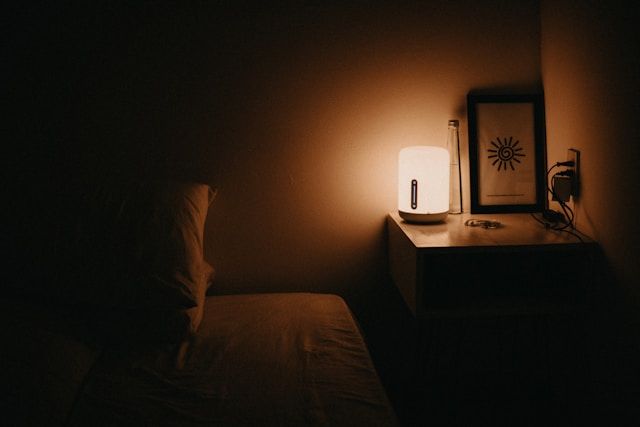How To Sleep Comfortably With A Herniated Disc

Sleeping with a herniated disc is no easy feat. From lower back pain to disrupted nights, this condition can play havoc with the quality of your rest, making you feel miserable in the mornings.
Herniated disc sufferers typically experience intense pain with bends and twists, lower back aches, and burning pain that shoots down the legs and back. Not only are these factors challenging to live with, but they can have knock-on effects on your long-term health due to sleep interruptions. For example, disrupted sleep can result in ongoing health issues, including weight gain, metabolic syndrome, and hypertension (Medic, Wille, and Hemels, 2017).
Today, we're looking at how to sleep with a herniated disc and the best sleeping positions for a comfortable night's rest. Let's dive in.
Understanding Herniated Discs
Did you know that spongy fibrous discs (invertebral discs) cushion the vertebrae in our spines? That's right. Discs provide a cushioned shock absorber for your spine — allowing the vertebrae to move smoothly.
A herniated disc occurs when the soft center of a spinal disc ruptures through its outer layer, causing a lot of pain. This can happen due to injury, but it can also happen as we age and the spine becomes less hydrated and weaker (Dydyk, Ruben Ngnitewe Massa, and Mesfin, 2022).
Typical symptoms of a herniated disc include:
- Numbness or tingling in the body part served by affected nerves.
- Weakness in muscles served by affected nerves.
- Leg or arm pain, often in the lower back, thigh, buttocks, and half.
The strength of the pain depends on where your herniated disc is located. Some people experience lower back pain, whereas others experience sciatica and leg pain if the disc is by the sciatic nerve.
The Impact of Sleep on Herniated Disc
Sleep is essential for your health. However, a herniated disc might leave you counting sheep.
The pressure on the herniated disc increases when you lay on your back. This can result in the disc moving further out of place and putting more pressure on the affected nerves.
Not only can this make the problem worse, but it'll cause you extra pain — especially if you're not in an appropriate sleeping position. Ouch.
Those experiencing a herniated disc need as much sleep as possible, though. Sleep has been proven to help healing (Adam and Oswald, 1984), so you'll need as much as possible. Therefore, finding the best sleeping position for a herniated disc is crucial to your quick recovery.
Why Is a Herniated Disc Worse at Night?

Herniated discs can cause more pain at night due to your sleeping position. Your spine changes position when lying down, which can irritate nerves near the affected disc. Also, your sleeping position can cause more pain at night, as you could be sleeping in a position that puts stress on the disc.
How To Sleep Comfortably With a Herniated Disc
Sleeping with a herniated disc isn’t always easy. But some lifestyle changes, sleeping positions, and other tips can help you quickly reach dreamland.
Best Sleeping Positions for a Herniated Disc
When sleeping with a herniated disc, you should aim to take pressure off the affected area. A sleeping position that works for you might not work for someone else. Experiment with a few and see which is most comfortable for your back.
These are the best sleeping positions for a herniated disc.
Side Sleeping
By trying the side sleeping position, you can achieve a neutral spinal alignment and take pressure off your herniated disc. However, you can’t simply turn onto your side. Ensure your shoulders are aligned and your back is straight for the best support.
Back Sleeping
Sleeping on your back can also promote better sleep and less pain. Lay flat on your back and place a pillow under your knees, taking extra pressure off your spine. Make sure your neck and head aren’t twisted for the best results. Otherwise, you could end up with more neck pain.
Reclining Position
The reclining position involves putting a pillow under your head and knees, supporting you from both angles. This aims to remove pressure from your spine and a herniated disc in your neck. Make sure you’re not using bad pillows, though.
Fetal Position
Finally, the fetal position is an excellent choice to relieve herniated disc pain. This involves laying on your side with your knees pulled towards your chest. Many find this the most comfortable position to sleep in.
Shop All Memory Foam PillowsSupportive Pillows and Mattresses for a Herniated Disc
Selecting an optimal pillow with neck support can improve your sleep quality (Jeon et al., 2014).
So, alongside trying new sleeping positions, you can also add supportive pillows and mattresses into your bedtime routine.
Memory foam pillow benefits are plentiful. These include promoting better pressure distribution, reducing neck fatigue and sleep comfort (Shen et al., 2012). If you have a herniated disc, this extra support can leave you with less discomfort and a more restful night.
The Groove Pillow is designed to promote pain-free mornings, optimal spinal alignment, and better sleep quality. Perfect if you’ve been seeking a solution for your restless nights. Experiencing pain in your lower back? The Groove X provides lower-back support for lower spine complaints.
Just make sure you know how to sleep on a memory foam pillow before you get started.
Exercise and Stretches for a Herniated Disc
Adjusting your sleeping position and refreshing your bed aren’t the only ways to increase your evening comfort. You can also add exercises and stretches into your daily routine.
Exercise can help to promote healing and lessen pain by increasing blood flow to the injury site, building muscle strength, improving bad posture, and decreasing spinal stress (Lovell, 2021).
Popular at-home exercises for a herniated disc include:
- Head lifts
- Neck extensions
- Chin tucks
- Shoulder retractions
- Knee-to-chest stretches
However, consult your healthcare provider before starting any new exercises. Sometimes, these exercises can cause additional injury due to a lack of proper technique, so proceed only once you have medical approval.

When To Seek Medical Attention
Typically, herniated discs get better in approximately four weeks. But if you’re still experiencing pain or numbness after six weeks or the pain suddenly gets worse, it’s time to consult a medical professional.
Seek urgent medical attention if you experience loss of feeling in your limbs, loss of bladder function, severe pain, or more weakness than usual. These could be signs of a more serious medical problem.
Final Words
Experiencing herniated disc pain is frustrating.
Try the science-backed tips and tricks in this article to improve your sleep and overall condition. Remember, you should visit your doctor if you don’t see any improvement or experience worse symptoms.
Explore our memory foam pillow collections today to add some extra support to your sleep.
Shop All Memory Foam PillowsReferences
- Adam, K. and Oswald, I. (1984). Sleep helps healing. BMJ, 289(6456), pp.1400–1401. doi:https://doi.org/10.1136/bmj.289.6456.1400.
- Dydyk, A.M., Ruben Ngnitewe Massa and Mesfin, F.B. (2022). Disc Herniation. [online] Nih.gov. Available at: https://www.ncbi.nlm.nih.gov/books/NBK441822/#:~:text=The%20most%20common%20cause%20of.
- Jeon, M.Y., Jeong, H., Lee, S., Choi, W., Park, J.H., Tak, S.J., Choi, D.H. and Yim, J. (2014). Improving the Quality of Sleep with an Optimal Pillow: A Randomized, Comparative Study. The Tohoku Journal of Experimental Medicine, [online] 233(3), pp.183–188. doi:https://doi.org/10.1620/tjem.233.183.
- Lovell, K. (2021). Exercises and Stretches for Herniated Disc Pain. [online] Healthcentral.com. Available at: https://www.healthcentral.com/condition/herniated-disc/exercises-stretches-herniated-disc-pain.
- Medic, G., Wille, M. and Hemels, M. (2017). Short- and long-term Health Consequences of Sleep Disruption. Nature and Science of Sleep, [online] 9(9), pp.151–161. doi:https://doi.org/10.2147/nss.s134864.
Shen, L.M., Hou, J.J., Zhu, Y.D. and Song, J. (2012). The Influence of Pillow Material on Body Distribution and Sleeping Comfort in Supine Position. Applied Mechanics and Materials, 201-202, pp.30–33. doi:https://doi.org/10.4028/www.scientific.net/amm.201-202.30.

